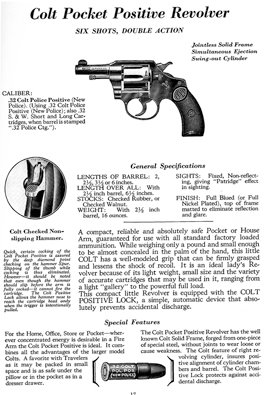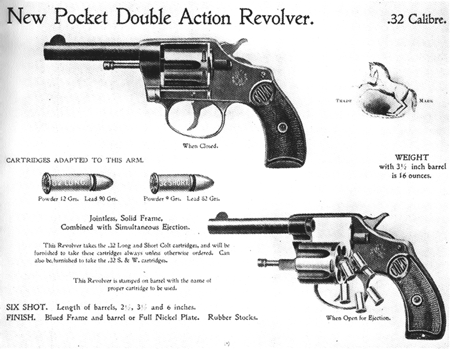 I like snubnose revolvers. I mean I really like snubnose revolvers.
I like snubnose revolvers. I mean I really like snubnose revolvers.
To my admittedly antiquated way of thinking, the snubbie is the perfect self-defense gun. Semiautos get all the press nowadays, but I keep coming back to the fact that in three decades of shooting all types of guns, I’ve never had a snubbie jam, lock up or otherwise put me in a pickle. How I wish I could say the same of semiautos!
But I try not to be dogmatic about such things. If you’re carrying a semiauto right now, you doubtless have good reasons for doing so, and I would be the last person to argue with you. Really, I was only kidding, anyway — sir.
But insofar as I’ve expressed my opinion on snubbies, I might as well go whole-hog and admit that I believe the Smith & Wesson Model 36 Chiefs Special is the greatest self-defense gun of all time. It’s tiny. It’s reasonably powerful. It’s controllable. It’s utterly reliable and totally foolproof. A Model 36 in the pocket beats a 1911 left in the nightstand any day of the week.
Yet the Model 36 isn’t my favorite snubbie. That distinction would have to go to the old Colt Pocket Positive, manufactured from 1905 to 1940. The Pocket Positive has the one critical attribute that characterizes so many Colt revolvers: style. And if you can forgive me for using such a word, I might even say that the Pocket Positive is cute. Not merely cute, mind you, but cute as Brittany Spears’ … nose.
A Different Bird
The Pocket Positive was an outgrowth of Colt’s New Pocket Revolver, introduced in 1893. In addition to being Colt’s first swingout cylinder pocket revolver, this was a handy little gun, the name of which distinguished it from the “old” Colt Open Top Pocket Model manufactured from 1871 to 1877.

The Open-Top Pocket Model was a different bird from the New Pocket Revolver: a tiny little spur-trigger, single-action .22 that didn’t even have a topstrap. In comparison, the New Pocket Revolver of 1893 really was new, and with its “modern” solid-frame, double-action design, it made arch-rival Smith & Wesson’s top-break revolvers look like yesterday’s news.
The New Pocket Revolver came in blued or nickel finish with hard rubber stocks and a 2 1/2-, 3 1/2-, 5- or 6-inch barrel. It was Colt’s smallest revolver but not its only concealable snubbie, if you wanted to stretch the term a bit.
The Colt Model 1877 in .38 and .41 Colt (the so-called Lightning and Thunderer, respectively) was available in a “Storekeeper’s” version with 2 1/2-inch barrel and no ejector rod assembly until 1909.
The Model 1877 Storekeeper could conceivably be called a snubnose pocket revolver if you had pockets big enough to conceal its sizeable frame. But however you sliced it, the New Pocket outclassed every other deep-cover revolver of its day.
The original Colt New Pocket .32 had a compact, round-butt grip frame that made it especially well-suited for concealed carry. In 1896, Colt developed a variation of the New Pocket with a square-butt grip frame and released it as the New Police.
That year, the New Police was adopted as the issue sidearm of the New York City Police Department, the nation’s largest metropolitan law-enforcement agency, by virtue of the recommendation of the police commissioner, an energetic up-and-comer named Theodore Roosevelt. Roosevelt’s endorsement went a long way toward establishing the credibility of Colt’s new line of .32s.
Yet neat as the New Pocket and New Police were, they shared two flaws: They had no provision for a passive safety and were chambered for a truly rotten little cartridge.
Unique Features
Like all of Colt’s double-action revolvers of the day, the New Pocket and New Police had no safety; neither active (manually-operated) nor passive (automatic). Thus, if you dropped a loaded New Pocket or New Police .32 — cocked or not — in such a way that it landed on its hammer, the chances were fairly good that you’d go home that night with an extra bellybutton.
Then there was the guns’ chambering: .32 Short and Long Colt. These cartridges were scaled-down versions of Colt’s proprietary .38 and .41 Long Colt loads, and they shared a common shortcoming: an outside-lubricated, heel-based bullet similar to today’s .22 Long Rifle round.
The .32 Colt cartridges provided poor accuracy because they didn’t fit the bore especially well, and their exposed lube rubbed off rather easily and collected all manner of dirt and grit. (On special order, Colt would chamber the New Pocket and New Police in the much-superior, inside-lubricated .32 S&W Long cartridge, but it wasn’t eager to recognize a S&W product or stamp the hated “S&W” on its guns.)
Despite its lack of a safety and the limitations of the .32 Colt rounds, the New Pocket wasn’t a bad little gun. It was extremely small and was a much better design than its closest competitor, the Smith & Wesson First Model .32 Hand Ejector of 1896.
For one thing, you could open its cylinder with one hand, a feat that was almost impossible with the Hand Ejector. For another, you could order it with a 2 1/2-inch barrel vs. the Hand Ejector’s shortest barrel length of 3 1/2 inches.
Colt also made hay of the fact that the New Pocket’s cylinder rotated toward the frame, but those of “other” double-action revolvers (nudge, nudge) rotated away from the frame. The implication was that the other revolvers (nudge, nudge) wouldn’t stay as tight as a Colt. True? Perhaps not, but it made for a good talking point.
The New Pocket was America’s first truly modern, solid-frame snubbie. All it needed was a few tweaks, which were to come in 1905.
In that year Colt improved the New Pocket — and the New Police, too — by giving it an internal, passive-hammer block safety that prevented the hammer-mounted firing pin from falling on a live cartridge unless the trigger was held all the way back. This safety was held to be utterly foolproof or, in other words, “positive.” Thus were born the Pocket Positive and the Police Positive.
The revolvers’ chambering received an upgrade, too. Colt had realized that inside-lubricated cartridges were the wave of the future, so — no doubt holding its corporate nose — it relented and chambered the Pocket Positive and Police Positive in .32 S&W Long. But not without a fight, by gum! There was no way in heaven or earth that Colt was going to put “S&W” anywhere on its guns, so it did the next best thing: It invented a .32 S&W Long cartridge of its own.
The resulting cartridge, the .32 Colt New Police, was identical to and interchangeable with the .32 S&W Long — except for one thing. The S&W cartridge had a round-nose lead bullet, but the Colt number had a bullet with a minuscule flat on its nose. That was the entire difference.
In retrospect, it’s amusing to see how Colt avoided using the phrase “.32 S&W” in its advertising of the day. A Colt catalog from the 1920s danced around the issue on a page describing the Pocket Positive’s chambering:
“Caliber: .32 Colt Police Positive (New Police). (Using .32 Colt Police Positive (New Police); also .32 S&W Short and Long Cartridges, when the barrel is stamped ‘.32 Police Ctg.’).”
I’ve read that paragraph five times, and I’m still confused.
A Little Beauty
 The Pocket Positive is simply a beautiful little revolver. Its main frame, grip frame and barrel harmonize in perfect proportions. Its barrel and extractor rod are unencumbered by a shroud, which has always seemed to me to give a snubbie an off-balance, muzzle-heavy appearance.
The Pocket Positive is simply a beautiful little revolver. Its main frame, grip frame and barrel harmonize in perfect proportions. Its barrel and extractor rod are unencumbered by a shroud, which has always seemed to me to give a snubbie an off-balance, muzzle-heavy appearance.
Finally, there’s the wonderfully sculpted cylinder latch. This latch, introduced in the 1920s, forms part of the recoil shield and was a big improvement from the angular, stamped latch that characterized Colt’s earlier double actions.
Every Pocket Positive I’ve fired has had a slick, smooth double-action trigger pull. That smoothness comes at a cost, however. The Colt’s lockwork gives great leverage but puts a lot of pressure on your hand, which sooner or later results in that characteristic last-second cylinder hitch that afflicts most heavily-used Colt double actions. Though not quite as slick as the Colt’s, the S&W Hand Ejector lockwork is much more durable.
The Pocket Positive disappeared from the Colt lineup in 1940, and its place was taken by the Detective Special and Police Positive Special. I doubt we’ll ever see the likes of the Pocket Positive again. In this day of magnumitis, the .32 S&W Long and .32 Colt New Police seem laughably underpowered. Still, whether I choose to carry one — and sometimes I do — the Colt Pocket Positive has my vote as the classiest snubbie of them all.

Next Step: Get your FREE Printable Target Pack
Enhance your shooting precision with our 62 MOA Targets, perfect for rifles and handguns. Crafted in collaboration with Storm Tactical for accuracy and versatility.
Subscribe to the Gun Digest email newsletter and get your downloadable target pack sent straight to your inbox. Stay updated with the latest firearms info in the industry.

![Best Concealed Carry Guns In 2025 [Field Tested] Wilson Combat EDC X9S 1](https://gundigest.com/wp-content/uploads/Wilson-Combat-EDC-X9S-1-324x160.jpg)


![Best 9mm Carbine: Affordable PCCs [Tested] Ruger Carbine Shooting](https://gundigest.com/wp-content/uploads/Ruger-Carbine-Shooting-100x70.jpg)
![Best AR-15: Top Options Available Today [Field Tested] Harrington and Richardson PSA XM177E2 feature](https://gundigest.com/wp-content/uploads/Harrington-and-Richardson-PSA-XM177E2-feature-100x70.jpg)

[…] drove the 1896 adoption of the New Police, a longer-barreled and square-butt version of the 1893 New Pocket revolver chambered for the .32 Colt. (Later, an improved version became the .32 Police Positive, chambered […]